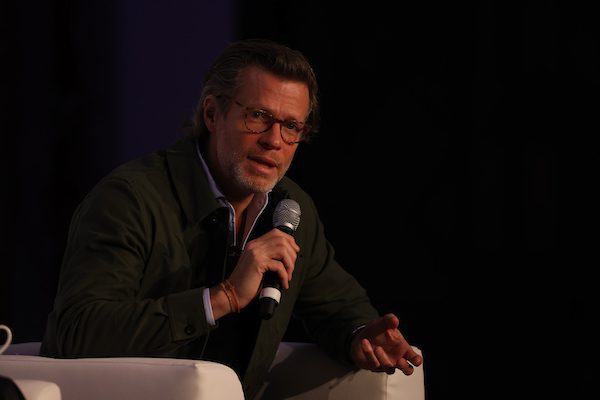Governments Understand DeFi, But are ‘Petrified’ Of It
During Blockworks’ DAS London event, panelists agreed that governments are aware of the power of DeFi but are scared of it.

Panel: DAS London: Investment Case for DeFi; Source: Ian Walton for Blockworks
- Everyone wants access to DeFi yields, but governments are standing in the way
- Regulators worry DeFi could collapse and have reverberating effects throughout the global economy
The double-digit yields that are the defining factor of Decentralized Finance (DeFi) are attractive to retail investors and institutions that are clamoring for an alternative to bonds, equities, or the paltry return on savings accounts.
As Blockworks covered earlier this year, there’s nearly $4 trillion in cash that corporations have on hand, and most of it is sitting in savings accounts and earning around 0% in interest. Corporations want to fix this, and there are plenty of company treasurers that have an eye on the yields that DeFi savings protocols like Compound or Celsius pay out.
On stage at Blockworks’ recent DAS London event, panelists discussed the investment case for DeFi — and what’s standing in its way.
FinTech consultancy Fnality’s Angus Fletcher, its Senior Commercial and Regulatory Advisor, explained that institutions want access to the yields, and, for the time being, the space is being allowed to grow. Institutions, he said, are looking at how to provide services in the space.
But it’s not an easy task.
Richard Muirhead, a managing partner at VC fund Fabric, called the regulatory process “monumentally dysfunctional” and there’s a great amount of uncertainty and fear as to what’s actually allowed.
“It’s a nightmare talking to lawyers, regulators in different jurisdictions, because essentially there is no truth out there,” he said.
According to Muirhead, regulators are concerned about AI and blockchain evolution undermining geopolitical security.
 Richard Muirhead, Fabric; Source: Ian Walton for Blockworks
Richard Muirhead, Fabric; Source: Ian Walton for BlockworksFnality’s Fletcher added that regulators tend to understand what’s going on, but have a fear that it could be a bubble in the making. Fletcher went on to say that some regulators even think that this could bring material benefits to the market — they just don’t want it to turn out to be the next derivatives bubble.
“They are absolutely petrified that this will end up like the derivatives bubble, and they will have no one to blame,” he said, pointing to their treatment of stablecoins as an example.
All this comes as crypto has begun building a lobbying machine in Washington D.C. As the Washington Post reported recently, Fidelity, Square and Coinbase are launching the Crypto Council for Innovation to “demonstrate the transformational promise of crypto.”
However, the Post also reports that in the seven months since the organization’s founding, not a lot has happened as the group has been bogged down in Washingtonian-style bureaucracy. An industry built on lightning fast transactions now has to deal with a slow-moving leviathan. Until it does, regulatory uncertainty persists.
Get the day’s top crypto news and insights delivered to your inbox every evening. Subscribe to Blockworks’ free newsletter now.






